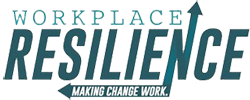As I sat in the lobby waiting to speak with a potential client, I took a look around their massive space. I had never been there before, and I was impressed with the building. The lobby was new, clean and impeccably decorated. I sat waiting for my contact as I spied their mission and values on display. I read through the information and was impressed again by the mission and the values that represented this company. I was excited to talk to this organization and learn more about their people.
We were having a nice talk when I brought up the awesome mission and values on display in the lobby. I loved that they were on full display for everyone to see. My contact agreed and said that they had done a great job creating those values a while back. After some probing questions on my part, my contact began to get a little more transparent.
He told me the whole truth.
He wanted to address issues concerning each departments inability to come together and work as one unified team. The problem was that each department viewed their responsibilities as most important, most valued, and failed to see how they had a responsibility to work better with others. They couldn’t grasp that their organization only succeeded when all the departments worked together seamlessly to create the perfect product. At this point, they were far from perfect. The product was suffering because of the inability for all the teams to see they were working toward the same goal.
After more probing, I discovered that leaders were struggling to be assertive and handle situations when they arose. They constantly shied away from conflict and swept it under the rug. And invariably, the truth came out in passive-aggressive behaviors between team members and leaders.
Even though it is obvious to you and me, that this company was in dire need of an intervention, this leader in charge was ambivalent about moving ahead in any way. It was apparent that the status quo was a much more comfortable place to hang out, than making these much-needed changes.
Now, remember the company’s mission and values prominently displayed on the wall? They were really great values like respect, communication, transparency and teamwork.
I can’t tell you how many times that I have uncovered a huge disconnect between the organization’s spoken values and the daily behaviors that take place inside the organization. And that’s what we are talking about-the thousands of rituals that occur inside an organization, day to day. All these many behaviors add up to a culture that doesn’t quite meet the standards of their proposed values. Over time, these seemingly insignificant tiny reactions become your culture. And every day that you don’t face the truth about your culture, your organization suffers.
As uncomfortable as it might be, I’m asking you to take an honest look at your organization. Are you and your team living up to the values that represent the organization? What changes need to be put in place to meet this goal? It’s time to take action and develop a game plan to attack the issues.


















